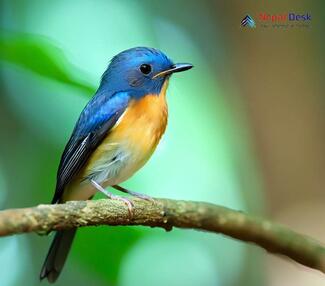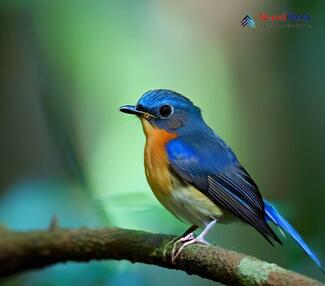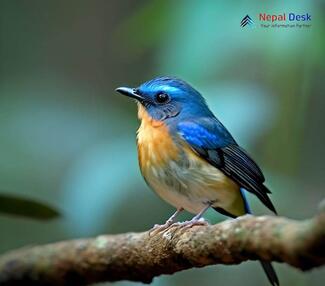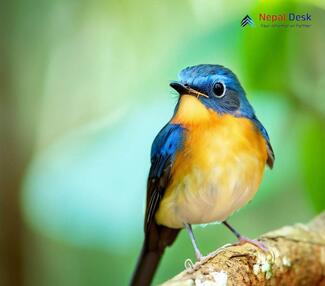Hidden within the breathtaking Himalayas is the stunning country of Nepal, a place celebrated not just for its extraordinary landscapes but also for its incredible biodiversity. Among its vast array of remarkable wildlife is the Tickell's Blue Flycatcher (Cyornis tickelliae), a small and brightly colored bird that delights birdwatchers and nature lovers alike. Let us explore everything there is to know about this fascinating bird and its presence in Nepal.
The Beauty and Home of the Tickell's Blue Flycatcher
Tickell's Blue Flycatcher is truly a sight to behold with its stunning hues. Males showcase a vivid blue upper body, dark blue wings and tail, and an orange-rust throat and chest. In contrast, females display more subtle colors, featuring olive-brown upper parts and a soft orange underbelly. Both sexes typically grow to between 13-14 centimeters in length.
These flycatchers can commonly be found in deciduous forests, dense woodlands, parklands, and lush riverbanks. They flourish at lower altitudes from sea level up to 1500 meters above sea level. In Nepal, they are often seen in protected areas like Chitwan National Park, Bardia National Park, and Shivapuri Nagarjun National Park.
Feeding Habits, Behavior, and Reproduction
Excelling as insectivores, Tickell's Blue Flycatchers feed on various insects such as beetles, moths, butterflies, and little spiders. These birds are known for patiently perching while awaiting their prey. As soon as an insect comes close enough to catch it, they swiftly swoop down before returning to their perch.
This species is quite territorial and strongly defends its space from intruders. Males sing melodiously to attract females during the breeding season, which runs from April to July. After wooing their partner, the female builds a cozy, cup-shaped nest using moss and spiderwebs, typically tucked away in tree hollows or beneath overhanging bark.
Eggs usually number between 2-4 and are a pale blue color with rust-colored speckles. Both parents share the duties of incubating the eggs for about 12-14 days and feeding the chicks upon hatching.
Preserving Nature and Birdwatching Opportunities
The population of Tickell's Blue Flycatcher is stable, and it has been designated as a species of Least Concern by the International Union for Conservation of Nature (IUCN). However, habitat destruction remains a concern for these fantastic birds. Continued efforts are essential to protect their environment and preserve their populations for generations to come.
Bird enthusiasts looking to spot this enchanting bird can visit Nepal during its prime birdwatching periods (March-May and September-November). The nation's numerous national parks and conservation areas offer a diverse range of bird species, providing an idyllic setting for observing the captivating Tickell's Blue Flycatcher in its natural home.
In summary, Tickell's Blue Flycatcher (Cyornis tickelliae) showcases the abundant avian variety found within Nepal. This small yet alluring bird offers a delightful experience to those who come across it – whether it's darting through the foliage or singing its sweet song. So grab your binoculars and embark on an inspiring journey centered around this amazing creature.




